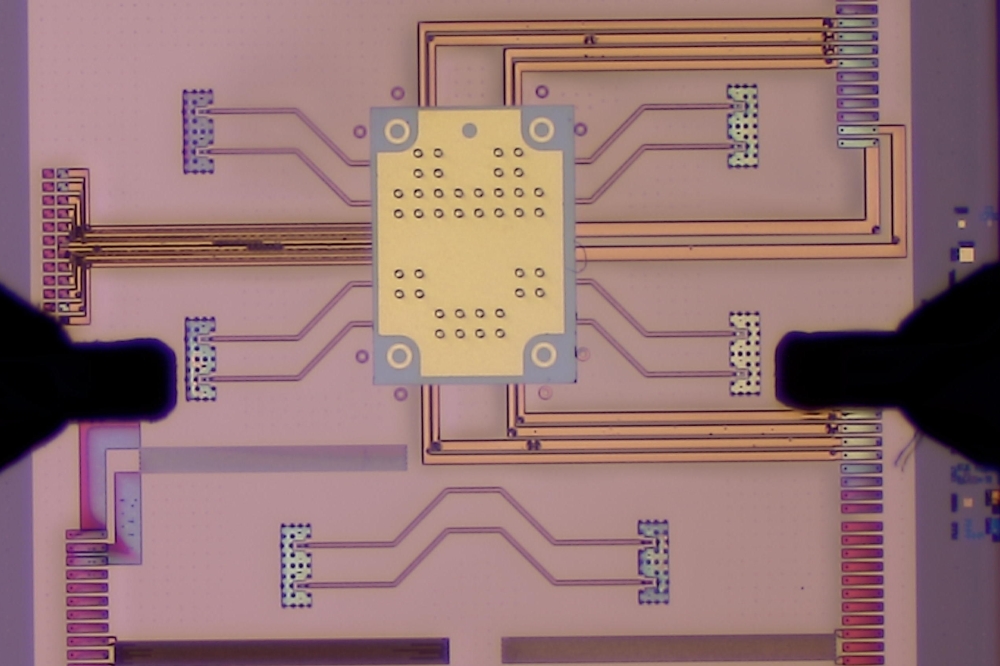Silicon replacement for GaAs PAs announced by STMicroelectronics
Up till now, cellphone manufacturers have been forced to use expensive GaAs devices for the power amplifier because silicon technology was unable to meet the demanding performance requirements at the RF frequencies (900-1900MHz) used by mobile phones.
Although exotic semiconductor materials such as GaAs and InGaP (indium gallium phosphide) are used in specialized applications, the vast majority of microelectronics devices are `silicon chips , i.e. they are made from silicon, a semiconductor material that is cheap, plentiful and non-toxic.
``Nobody would use anything other than silicon if they had a choice, but cellphone manufacturers didn t have a choice until now because silicon couldn t match the power amplification performance of GaAs at cellphone frequencies, said Giuseppe Ferla, R&D Director of ST s Discrete and Standard Circuits Group in Catania, Italy, where the new technology was developed.
ST s enhanced silicon bipolar technology, in conjunction with a new RF design methodology, allows, for the first time, products built from silicon to match the performance of GaAs devices in the frequency range used by mobile phones, while retaining the overwhelming advantages of silicon technology in terms of cost, reliability and flexibility. In particular, because the power amplifier is built from silicon, the bias and power control circuits, currently implemented as separate silicon chips, can be incorporated in the power device, offering the highest level of integration and, consequently, of cost-effectiveness.
Although there are many other potential applications, the new technology was developed specifically to meet the needs of mobile phone manufacturers. ``The cellular hand-held market is intensely competitive and there is great pressure to reduce the cost of the components. Our aim was to extend the performance of silicon technology to the point where mobile phone manufacturers would no longer be forced to use GaAs technology, which is more expensive and much less suitable for integration than silicon, in the power amplifier, said Ferla.
ST plans to introduce the first commercial product using this technology as early as April 2002. The new device, through a combination of technology advances from ST and an innovative RF design methodology developed in conjunction with the University of Catania, completely replaces existing GaAs devices, allowing cellphone makers to reduce their component costs without compromising performance.
``In developing this new technology, we have again leveraged the enormous power of our network of academic research partners, noted Ferla. ST has research partnerships with many of the world s most prestigious universities and institutes in Europe, the USA and Asia, with research interests ranging from fundamental solid-state physics to state-of-the-art algorithms for communications and multimedia applications. In this case, the University of Catania was ST s `concurrent engineering partner, helping to develop the critical design tools and methodologies needed to allow the new process to be quickly and efficiently used to design and manufacture commercial devices.
Technical Information
ST s proprietary RF bipolar technology (F(t)=50GHz and F(max)=65GHz at BV(CEO)~3.5V) has been adapted to provide the optimum compromise between operating frequency and breakdown voltage for power amplifier applications. The new technology has been proven to work up to 5GHz, well above the frequencies required for current and future mobile phone applications.
It supports the embedding of a variety of passive and active components, allowing the integration of input and interstage matching and bias and control circuits. Most importantly, the design tools needed to achieve this integration were developed simultaneously with the process technology, thereby allowing immediate commercial deployment of the new technology.
Collector optimization (Selective Implanted Collector) techniques are used to obtain the best compromise between the higher BV(CEO) (allowing operation from 2.7V up to 5V) and the current handling capability. This results in outstanding power performances from 900MHz to 1.9GHz, allowing the devices to withstand severe output mismatch conditions.
Trench isolation and die layout optimization minimize the effects of parasitic capacitances, resulting in outstanding performance in terms of power efficiency.
At the same time, an innovative emitter grounding optimization technique delivers the maximum power gain. The performance breakthrough of the new power amplifier exploits both the new RF technology developed by ST and the innovative RF design methodology developed in conjunction with the University of Catania. NOTE TO EDITORS: In the tenth paragraph, the symbol between ``BV(CEO) and ``3.5V is a ``tilde. This symbol may not appear properly in some databases. Investor Relations Europe: Benoit de Leusse Tel: +33.4.50.40.24.30 Fax: +33.4.50.40.25.80
Investor Relations USA: Stanley March Tel: 212/821-8939 Fax: 212/821-8923
Press Relations Europe Maria Grazia Prestini Tel: +33 4 50 40 25 32 Fax: +33 4 50 40 25 40
Press Relations US: Michael Markowitz Tel: 212/821-8959 Fax: 212/821-8922
E-mail: michael.markowitz@st.com
Web site: http://www.st.com































